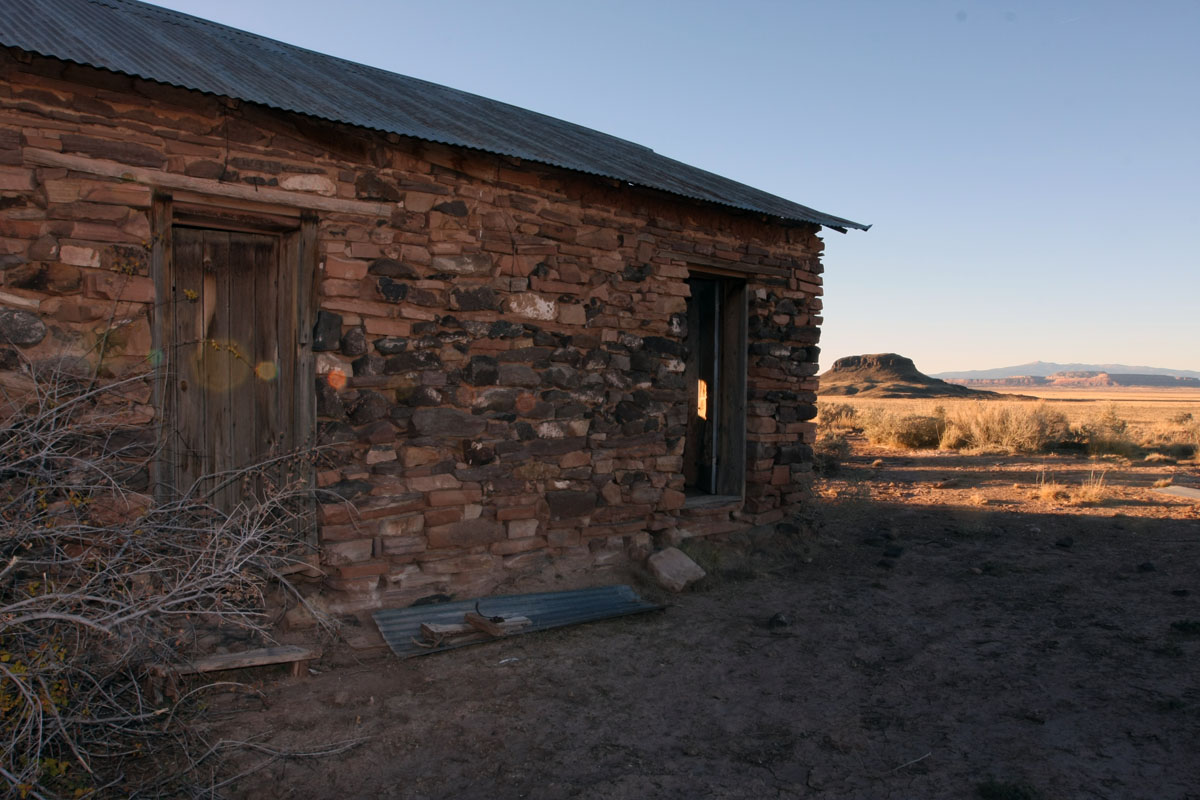I was driving out to shoot an old stone building in the desert south of I-40, west of Albuquerque, yesterday afternoon and I came across an unsettling response from my trusted truck.

I've had this truck for 14 years now but recently decided to start "fixing it". It now has a modest lift from Toytec and bigger tires, 285/70/R16 Cooper Discoverer STMaxx's. Roads were generally in decent shape so I didn't bother to air down.
The issue was then when I would hit soft sandy patches of something resembling bull dust I could feel the rear starting to come around like I was driving in snow. I have not experienced this sensation in dirt before. Can anyone say whether this is a function of the tires and lift or was it more likely just due to me driving too fast for the conditions? Is the fix possibly more weight in the back? I did not experience this sensations while driving my wife's 4Runner out to John's Canyon below Muley Point in much worse conditions.
And to complete the story, here's the house I was going for. I had come across this house about 5 years ago when heading out to explore a cool spot called Petaca Pinta (https://www.blm.gov/visit/petaca-pinta-wsa) and finally made time to get back out there to get some shots.

And in profile, with a volcanic core common to this area, and a much bigger one (Mt. Taylor) in the distance.

Some art work on the east wall.

And the view out the window looking north.


I've had this truck for 14 years now but recently decided to start "fixing it". It now has a modest lift from Toytec and bigger tires, 285/70/R16 Cooper Discoverer STMaxx's. Roads were generally in decent shape so I didn't bother to air down.
The issue was then when I would hit soft sandy patches of something resembling bull dust I could feel the rear starting to come around like I was driving in snow. I have not experienced this sensation in dirt before. Can anyone say whether this is a function of the tires and lift or was it more likely just due to me driving too fast for the conditions? Is the fix possibly more weight in the back? I did not experience this sensations while driving my wife's 4Runner out to John's Canyon below Muley Point in much worse conditions.
And to complete the story, here's the house I was going for. I had come across this house about 5 years ago when heading out to explore a cool spot called Petaca Pinta (https://www.blm.gov/visit/petaca-pinta-wsa) and finally made time to get back out there to get some shots.

And in profile, with a volcanic core common to this area, and a much bigger one (Mt. Taylor) in the distance.

Some art work on the east wall.

And the view out the window looking north.





